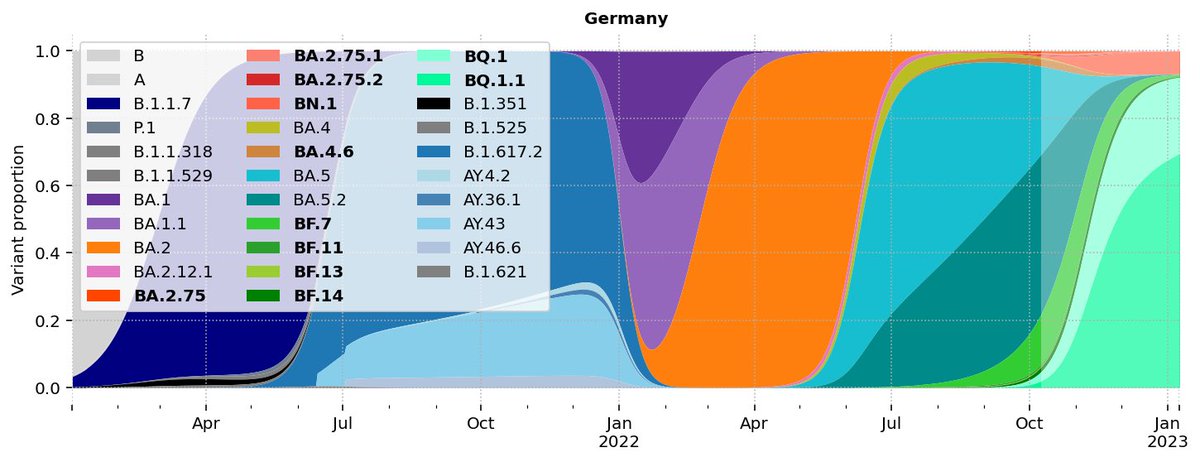
The next few months may be a tight race between the BQ.1.1 and XBB.1 SARS-CoV-2 variants.
- Globally BQ.1.1 grew ~12% faster than BA.5, ranging from ~10% in Belgium to ~15% in Germany.
- XBB.1 grew >20% faster than BA.5 in Singapore, ~13% in the U.S., but only ~7% in Denmark.

- Globally BQ.1.1 grew ~12% faster than BA.5, ranging from ~10% in Belgium to ~15% in Germany.
- XBB.1 grew >20% faster than BA.5 in Singapore, ~13% in the U.S., but only ~7% in Denmark.


The current uncertainty of XBB.1’s growth rate makes it an open race.
- XBB.1 dominance in Asia seems given.
- BQ.1.1 is widespread in Europe and North America, so it is likely that it will keep its higher share.
- The rest of the world could see either outcome I think.
- XBB.1 dominance in Asia seems given.
- BQ.1.1 is widespread in Europe and North America, so it is likely that it will keep its higher share.
- The rest of the world could see either outcome I think.

The distinct regional spread has has been noted before by @TWenseleers and others.
https://twitter.com/twenseleers/status/1578513915830362112
BQ.1.1 and XBB have very distinct spike mutations.
- BQ.1.1 derives from BA.5.
- XBB is a recombination of two BA.2 lineages (presumably during co-infection of the same individual).
- Neutralisation of XBB by vaccine/infection derived antibodies was found to be weaker.
- BQ.1.1 derives from BA.5.
- XBB is a recombination of two BA.2 lineages (presumably during co-infection of the same individual).
- Neutralisation of XBB by vaccine/infection derived antibodies was found to be weaker.
https://twitter.com/corneliusroemer/status/1580867641085857796
Coming back to current incidences.
- At ~40%, France has one of the highest shares of BQ.1.1 and its effect will be felt from now on.
- France may thus become an early indicator how the BQ.1.1 wave plays out in Europe, on the back of the current BA.5 driven surge.

- At ~40%, France has one of the highest shares of BQ.1.1 and its effect will be felt from now on.
- France may thus become an early indicator how the BQ.1.1 wave plays out in Europe, on the back of the current BA.5 driven surge.


The analysis was done using our genomicsurveillance workflow, github.com/gerstung-lab/g…
Data from GISAID provided in aggregated form by cov-spectrum.org. Thanks to all contributors.
Thanks to @CorneliusRoemer and @TWenseleers for many discussions.
Data from GISAID provided in aggregated form by cov-spectrum.org. Thanks to all contributors.
Thanks to @CorneliusRoemer and @TWenseleers for many discussions.
Code and an analysis summary can be found here: github.com/gerstung-lab/S…
• • •
Missing some Tweet in this thread? You can try to
force a refresh













